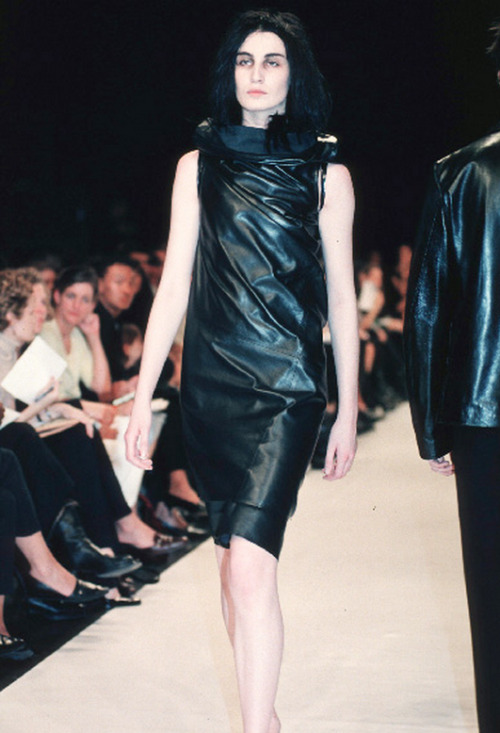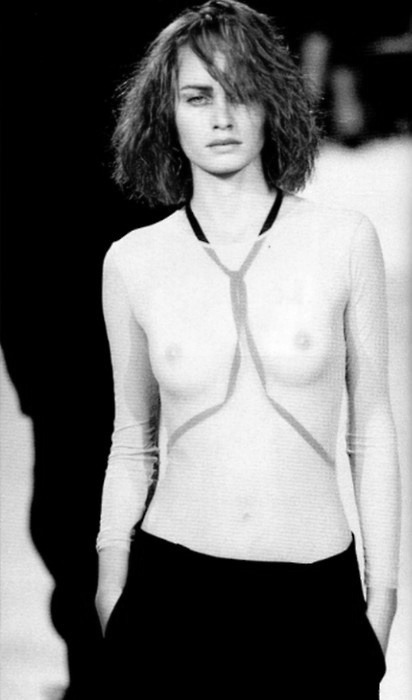This next post is all about one of fashion's cult icons, and another graduate of the iconic Antwerp fashion school that spawned giants such as Martin Margiela and Dries van Noten. Ann Demeulemeester's aesthetic is a fine example of a different brand of minimalism, a sort-of cross between grunge and elegance. Showing her first collection way back in 1989, it wasn't until the mid-to-late Nineties that Demeulemeester truly started to gain recognition for her work within the fashion community. Alongside houses such as Prada and Balenciaga, Demeulemeester focused on easy silhouettes and a monochrome palette but, instead of choosing the chic, streamlined accessories favoured by her contemporaries, Demeulemeester often completed the looks with chunky worker boots and home-made accessories.
The designer also had a tendency to work with rougher, edgier materials such as leather and PVC to engineer the look - one of the recurring themes within Demeulemeester's work is the contrast between hard and soft, and this is usually represented literally in the materials and silhouettes used, such as with the leather dress pictured above. The mid-Nineties were arguably the height of minimalism's popularity in high-fashion - at that time, Demeulemeester represented an element of choice, an alternative to the other sleek, more feminine incarnations of the look that were dominating the runways.
Perhaps the reason that Demeulemeester eventually became so successful was her ability to blend deconstruction and minimalism and still create a look that was unmistakably high-end. In contrast to the cobweb-knit jumpers of Comme des Garçons, Demeuleester's brand of deconstruction was often shown in the styling of the clothing as opposed to the design of the garments themselves. Models walked the runway in overszed jackets that were half-unbuttoned and draped casually across the shoulder - an example of forward-thinking originality that allowed the wearer to create several different looks from one item.
Overall, Demeulemeester has gained success by becoming success with an easier, more functional interpretation of minimalism. The subtle details in her designs and the styling of her shows demonstrated a forward-thinking attitude to fashion - this attitude combined with a determination to introduce grunge into the world of fashion truly set her apart from her contemporaries. Even to this day the designer is as relevant as ever, and her work has been shown in several exhibitions alongside other iconic collections from the 1990s, ensuring her status as one of the true icons of minimalism.





No comments:
Post a Comment